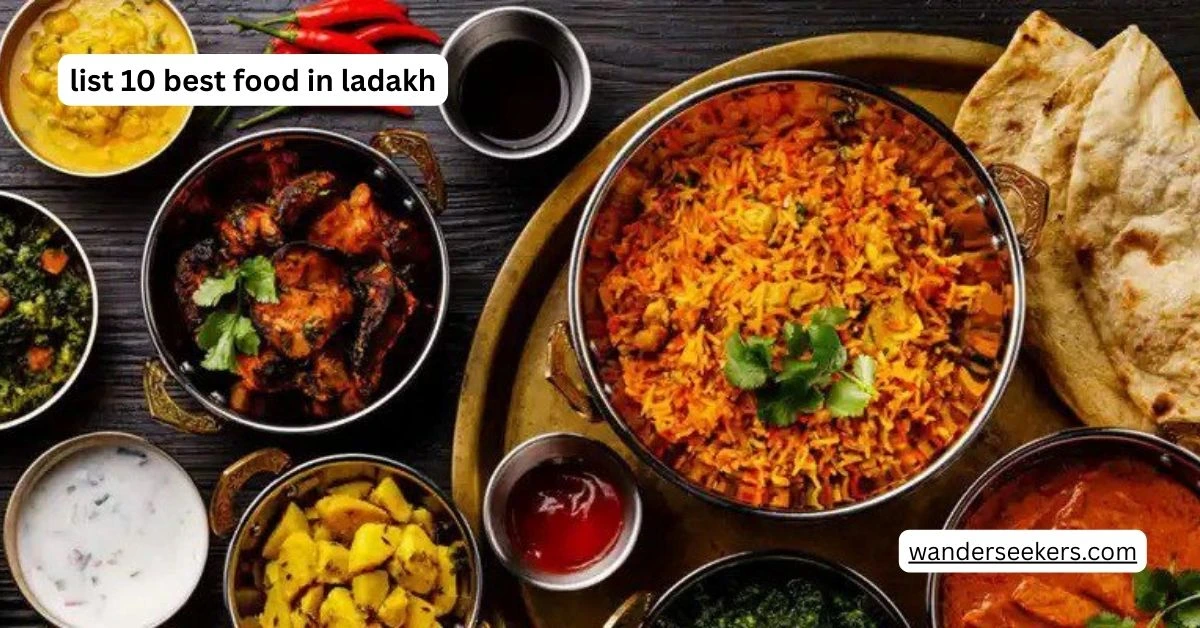The region’s extreme climate, Buddhist culture, and Tibetan influences. The food here is designed to provide warmth, energy, and nourishment while delivering bold, distinct flavors. In this article, we’ll explore ten must-try Ladakhi dishes, diving into their history, preparation methods, cultural significance, and the unique flavors that make them special.
Table of Contents
1. Thukpa – The Hearty Noodle Soup

Thukpa is a comforting noodle soup that originated in Tibet and has become a staple in Himalayan cuisine, especially in Nepal, Bhutan, and parts of India like Ladakh and Sikkim. It is a flavorful broth-based dish made with hand-pulled noodles, vegetables, and sometimes meat like chicken or mutton. The soup is infused with aromatic spices such as garlic, ginger, cumin, and chili, creating a warm and nourishing meal perfect for cold climates. Traditionally, Thukpa is prepared by simmering a rich broth with vegetables and protein, then adding noodles to soak up the flavors. The dish has evolved, with regional variations that range from mildly spiced to fiery hot. In Nepal, Thukpa is often served with a spicy twist, while Bhutanese versions tend to be slightly sweeter. Whether enjoyed as a street food or a homemade meal, Thukpa remains a beloved dish that brings comfort and warmth to those who savor it.
2. Momos – The Classic Dumplings
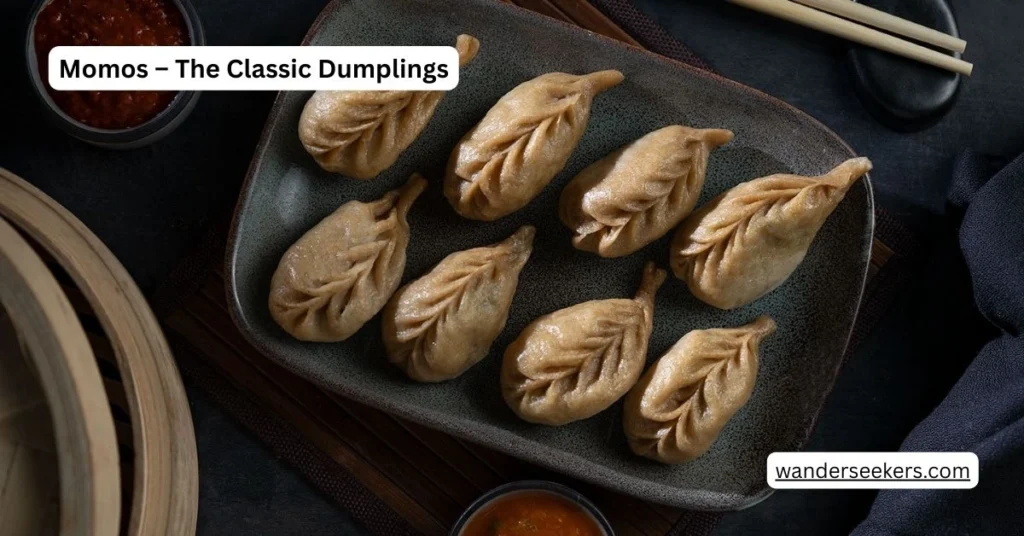
Momos are a beloved dumpling dish that originated in Tibet and spread across Nepal, Bhutan, and India, becoming a staple street food. These bite-sized delights are made with a soft, wheat-based dough, filled with a variety of ingredients such as minced meat, vegetables, or cheese. Traditionally, momos are steamed, but they can also be fried or served in a flavorful broth known as jhol momo. The dumplings are often accompanied by a spicy dipping sauce made from tomatoes, garlic, and chilies, adding an extra kick to their taste. Over time, momos have evolved with regional variations, including tandoori momos and chocolate momos, reflecting local culinary creativity. Their popularity has soared, making them a favorite comfort food across South Asia. Whether enjoyed at a roadside stall or a fine-dining restaurant, momos remain a symbol of warmth, simplicity, and rich flavors.
3. Skyu – The Ladakhi Wheat Stew
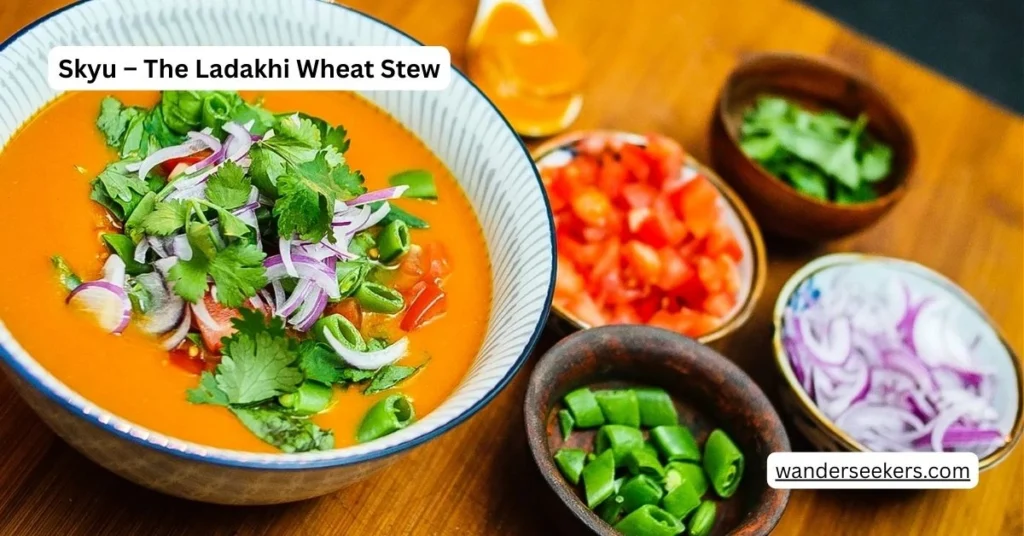
Momos are a beloved dumpling dish that originated in Tibet and spread across Nepal, Bhutan, and India, becoming a staple street food. These bite-sized delights are made with a soft, wheat-based dough, filled with a variety of ingredients such as minced meat, vegetables, or cheese. Traditionally, momos are steamed, but they can also be fried or served in a flavorful broth known as jhol momo. The dumplings are often accompanied by a spicy dipping sauce made from tomatoes, garlic, and chilies, adding an extra kick to their taste. Over time, momos have evolved with regional variations, including tandoori momos and chocolate momos, reflecting local culinary creativity. Their popularity has soared, making them a favorite comfort food across South Asia. Whether enjoyed at a roadside stall or a fine-dining restaurant, momos remain a symbol of warmth, simplicity, and rich flavors.
4. Chhutagi – The Unique Bow-Tie Pasta
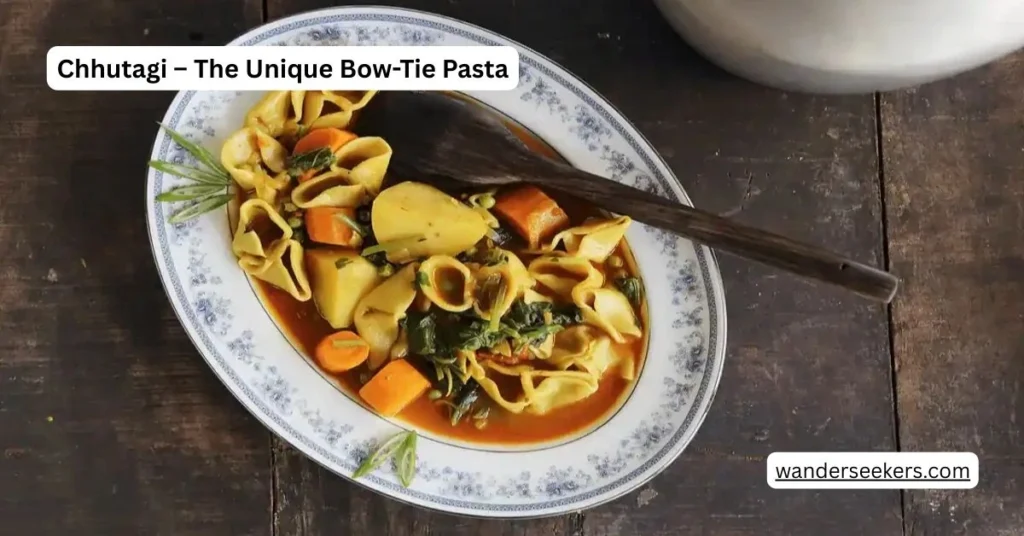
Chhutagi is a traditional Ladakhi pasta dish, known for its bow-tie-shaped wheat dumplings cooked in a rich, comforting broth. This dish is a staple in Ladakh’s cold climate, providing warmth and nourishment. The name “Chhutagi” comes from “Chu” (water) and “Tagi” (bread), reflecting its soupy nature. The dough is made from whole wheat flour, kneaded into small, hand-shaped pieces resembling bow ties. These dumplings are then simmered in a flavorful broth made with vegetables, spices, and sometimes meat, creating a hearty meal. The broth is infused with garlic, ginger, mustard oil, and mild spices, giving it a deep, earthy taste. Chhutagi is often enjoyed as a comfort food, especially during harsh winters, and is a symbol of Ladakhi’s culinary heritage. Its simplicity, combined with rich flavors, makes it a beloved dish among locals and travelers alike.
5. Tigmo – The Fermented Bread Delight
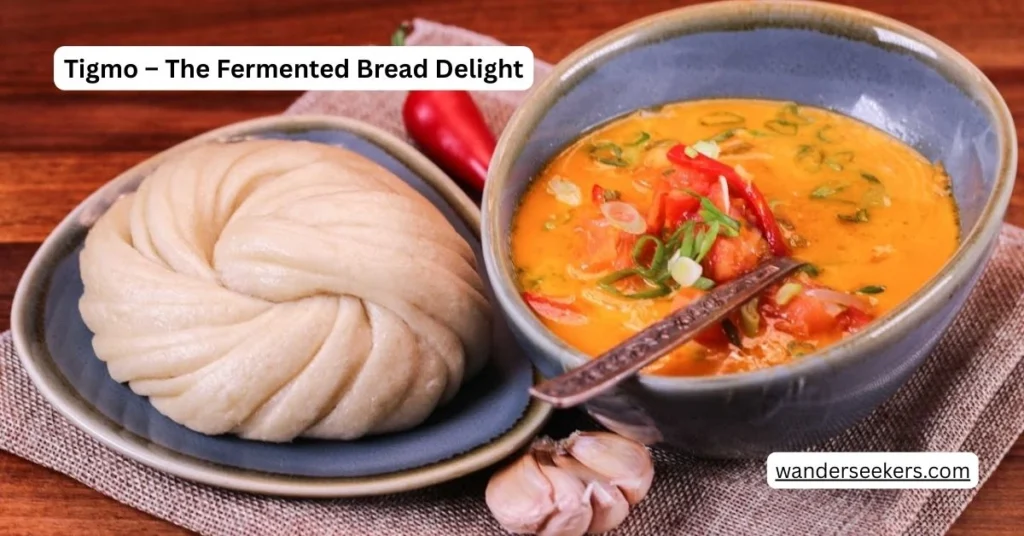
Tigmo, also known as Tingmo, is a traditional Tibetan steamed bread, popular in Himalayan regions like Ladakh, Bhutan, and Nepal. Unlike regular bread, Tigmo is fermented, giving it a slightly tangy taste and a soft, fluffy texture. The dough is made from all-purpose flour, yeast, salt, and sugar, kneaded until smooth and left to rise, allowing fermentation to develop its unique flavor. Once ready, the dough is rolled into thin sheets, twisted into layered shapes, and steamed until light and airy. Tigmo is often served with spicy curries, vegetable stews, or meat-based dishes, making it a versatile accompaniment. Its mild sweetness and pillowy softness allow it to absorb the flavors of the dish it’s paired with, enhancing the overall meal. Whether enjoyed as breakfast bread or alongside a hearty Tibetan meal, Tigmo remains a beloved staple in Himalayan cuisine. You can explore more about Tigmo here or here.
6. Ladakhi Pulao – The Aromatic Rice Dish
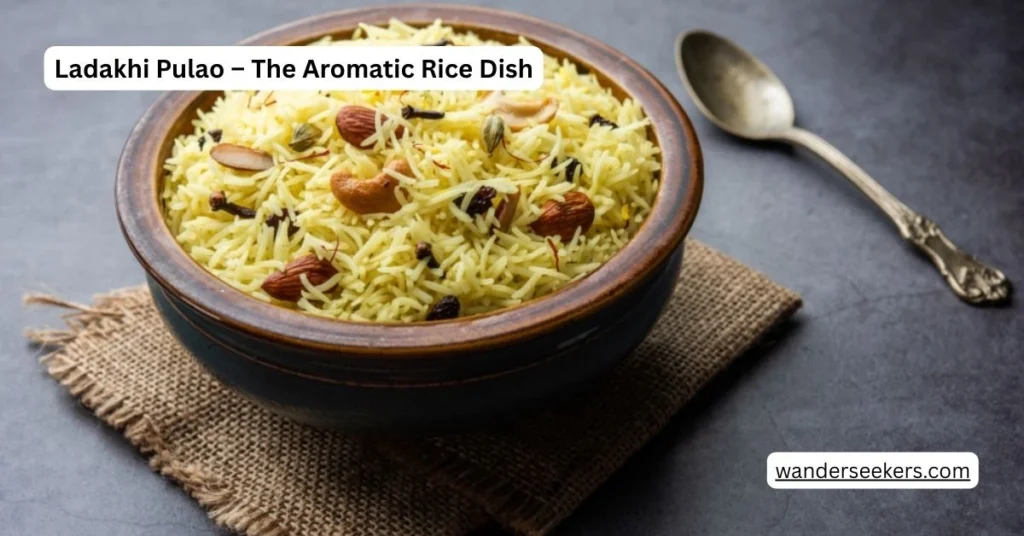
Ladakhi Pulao is a fragrant and flavorful rice dish that traces its origins to the Yarkandi Pilau, reflecting Ladakh’s historical ties with Central Asia. Unlike other pulao varieties, this dish is prepared using mutton stock, allowing the rice to soak up the rich, aromatic essence of the spices and meat juices. The key ingredients include long-grain basmati rice, caramelized onions, carrots, and nuts, which add layers of texture and taste. The pulao is subtly spiced, often using black cardamom, fennel seeds, and shah jeera, creating a delicate yet deeply satisfying flavor profile. Traditionally, Ladakhi Pulao is enjoyed during special occasions and family gatherings, symbolizing warmth and hospitality. Its unique preparation method and mild seasoning make it stand out from other Indian rice dishes, offering a taste of Ladakh’s rich culinary heritage.
7. Khambir – The Local Whole Wheat Bread
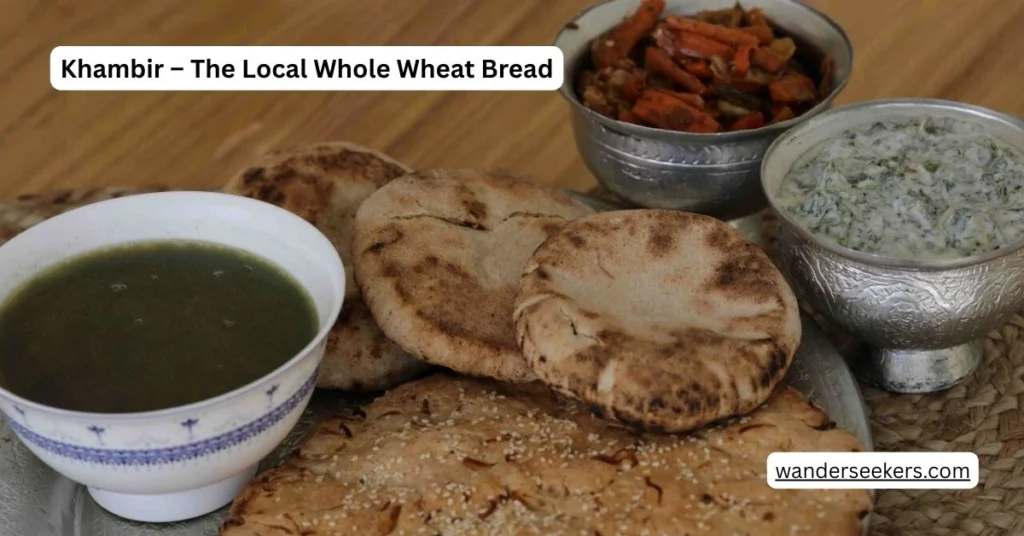
Khambir is a traditional Ladakhi whole wheat bread, known for its thick crust and soft interior. It is a staple in Ladakh’s cold climate, providing warmth and nourishment. The bread is round, slightly dense, and leavened, making it distinct from other Indian flatbreads. It is often enjoyed with butter tea, a salty Tibetan-style tea that complements its hearty texture. The fermentation process gives Khambir its unique texture, making it chewy yet soft. Traditionally, it is baked on a hot stone before being cooked over an open flame, ensuring a crispy crust. The ingredients are simple—whole wheat flour, yeast, salt, and water—but the slow fermentation process enhances its flavor. Khambir is a symbol of Ladakhi hospitality, often shared during family meals and celebrations. Whether paired with tea or served alongside stews, it remains a beloved part of Ladakh’s culinary heritage.
8. Butter Tea – Ladakh’s Energy Drink
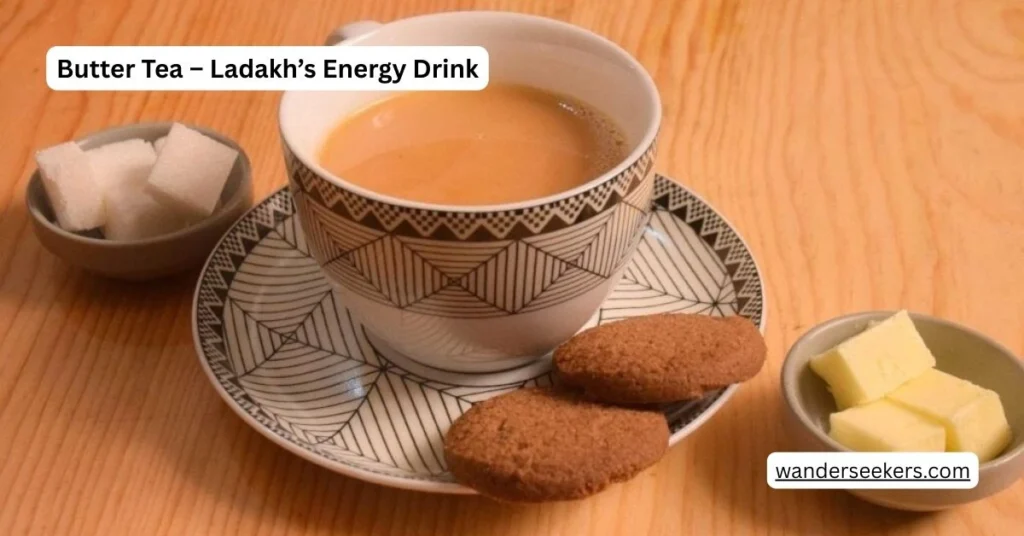
Butter Tea, also known as Gur Gur Chai, is a traditional Ladakhi beverage that plays a vital role in the region’s culture and daily life. Unlike regular tea, which is typically sweet, Butter Tea is savory and creamy, made from a blend of black tea leaves, yak butter, salt, and water. This unique drink is rich in calories, energy-boosting fats, and nutrients, making it an essential part of Ladakh’s high-altitude lifestyle. The fat content from the butter helps insulate the body against freezing temperatures, while the salt aids in hydration. Locals drink it throughout the day, whether at breakfast, during meals, or as a mid-afternoon refreshment. It is also a symbol of hospitality, often served to guests in Ladakhi homes and monasteries. The preparation involves brewing strong tea, blending it with butter and salt, and churning it to achieve a smooth, frothy texture.
9. Chhang – Ladakh’s Indigenous Alcoholic Beverage
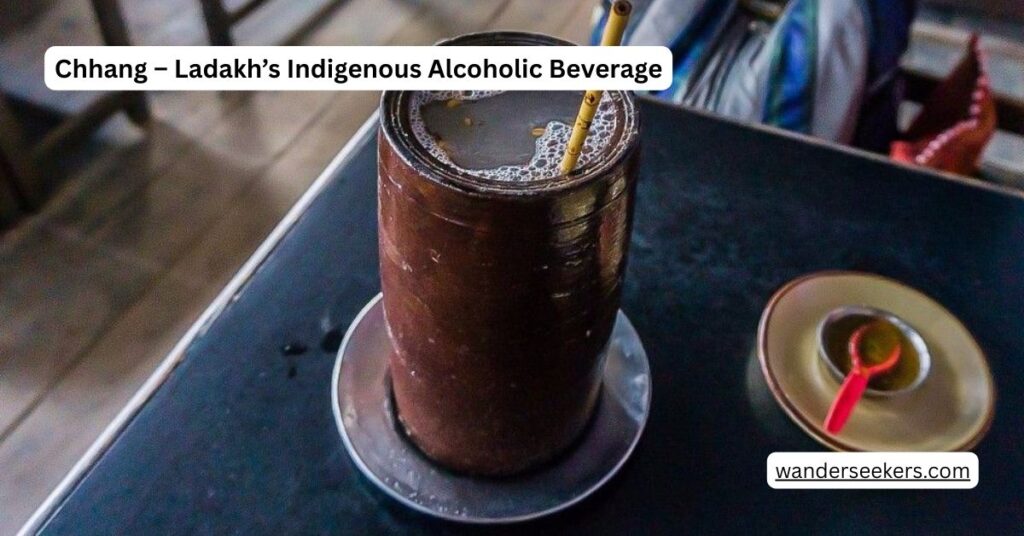
Chhang is a traditional fermented barley beer enjoyed in Ladakh and other Himalayan regions. This locally brewed drink is an integral part of Ladakhi culture, served during celebrations, religious festivals, and social gatherings. It is not just a beverage but a symbol of warmth, hospitality, and community bonding in Ladakh’s cold and rugged terrain. The preparation of Chhang follows an age-old fermentation process, where barley grains are soaked, steamed, and mixed with natural yeast, allowing them to ferment over several days. The result is a mildly alcoholic drink with a smooth, slightly sour, and earthy taste. Chhang is often served warm in winter and chilled in summer, making it a versatile drink for different seasons. It plays a vital role in Ladakhi traditions, being offered to guests as a sign of respect and used in Buddhist rituals.
10. Saag – The Simple Yet Flavorful Spinach Dish
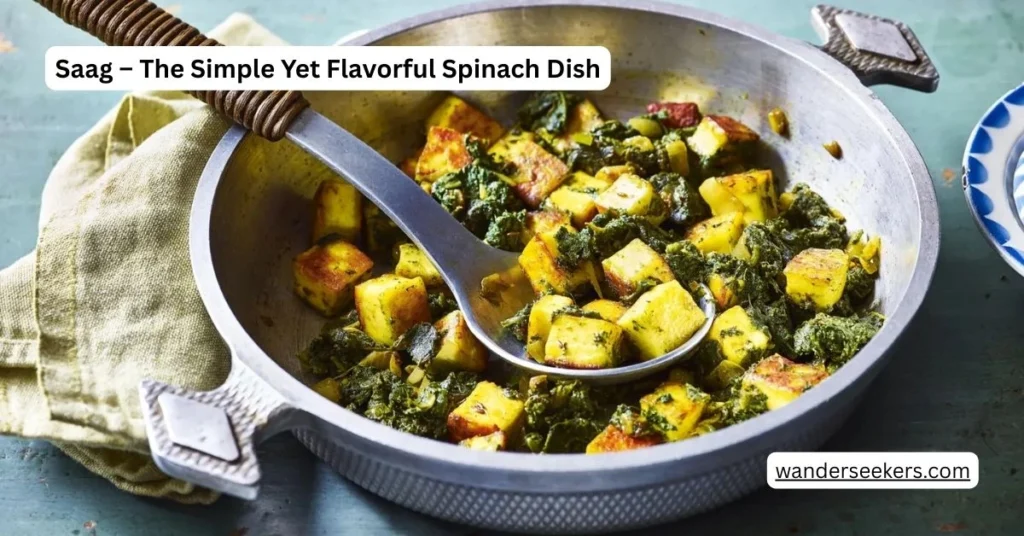
Saag is a classic Indian dish made from leafy greens, most commonly spinach, mustard greens, or fenugreek leaves, cooked with aromatic spices to create a rich, flavorful curry. This dish is deeply rooted in North Indian and Punjabi cuisine, where it is often paired with makki di roti (corn flatbread) for a wholesome meal. The preparation involves slow-cooking the greens with onions, garlic, ginger, and spices like cumin, coriander, and garam masala, allowing the flavors to meld beautifully. Some variations include Saag Paneer, where cubes of paneer (Indian cottage cheese) are added, or Saag Aloo, which incorporates potatoes. The dish is known for its nutritional benefits, being packed with iron, fiber, and vitamins, making it both delicious and healthy. Whether enjoyed with rice or flatbread, Saag remains a comfort food that embodies the warmth and richness of Indian cuisine.
